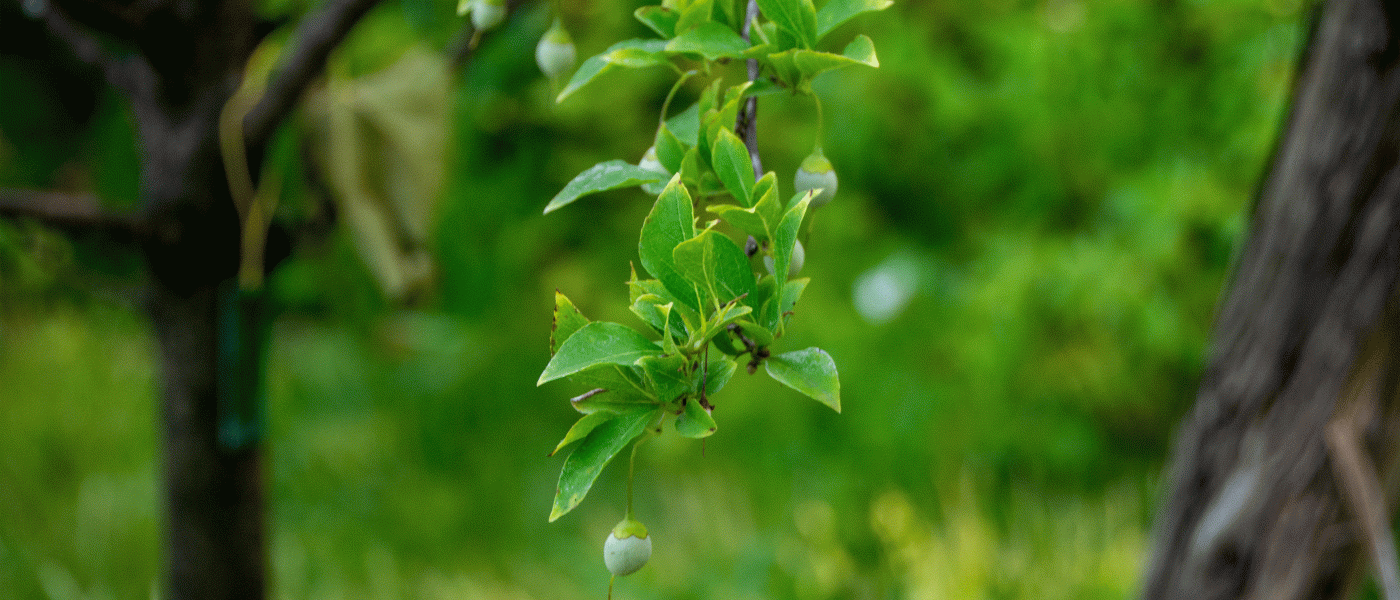Design Ideas for Your Shady Urban Garden
Brooklyn Botanic Garden’s Elizabeth Scholtz Woodland Garden offers great inspiration for urban gardeners. This garden was designed with the existing tall canopy of oaks and hornbeam overhead and showcases plants and gardening strategies suitable for Brooklyn backyards and similar shady, dry conditions.
The garden was modeled after a natural woodland and includes multiple layers beneath the canopy: smaller trees, shrubs, and herbaceous plants of different heights.
In a city, buildings often have a light-blocking effect similar to that of the tree canopy in nature. Urban gardeners can take a lesson from the way understory trees, shrubs, and forest floor plants have adapted to thrive, and create a complex planting with multiple layers in the shade created by buildings.
Below are some examples of small trees, shrubs, and groundcovers from the Woodland Garden. Consider including a variety of these plants in your own city garden.
Small Trees (10–20 feet tall)
These create the understory layer beneath tall tree canopies or in the shadows of buildings. There are many small trees and tall shrubs with added features like flowers and interesting bark that add year-round interest.
Sweetbay Magnolia
This native magnolia species produces fragrant, creamy white flowers that appear in late spring. Many hybrids are also available.
Tall Stewartia (Stewartia monadelpha)
Actually not that tall (maxing out at around 20 feet), the tall stewartia has white flowers that bloom in June and lovely reddish exfoliating bark that is more visible in winter.
Japanese Snowbell (Styrax japonicus) and Fragrant Snowbell (Styrax obassia)
These related species of small tree both have fragrant, white bell-shaped flowers that appear in late spring or early summer.
Franklin Tree (Franklinia alatamaha)
Extinct in the wild, this native tree blooms in late summer with flowers persisting until fall. Named after Benjamin Franklin, the species was first documented by early American naturalist John Bartram and his son William. All of the specimens in existence today are believed to have descended from trees the Bartrams cultivated from seeds they collected in Georgia in the 1770s. Though notoriously difficult to cultivate, it is thought to do better in the north than its native southern region.
Shrub Layer
The deciduous and evergreen shrub options for shady areas offer interesting leaf shapes as well as many different flowers. In addition to popular spring bloomers like rhododendrons, flower choices include early-winter bloomers and summer bloomers. Shrubs with fall leaf color and winter berries are also featured.
Sweetshrub ‘Venus’ (Calycanthus ‘Venus’)
This magnolia relative has strongly scented spicy flowers that bloom in late spring.
Mount Airy Fothergilla (Fothergilla x intermedia ‘Mount Airy’)
This Southeast native grows vigorously and produces bottlebrush-like flowers in spring.
Pale Spicebush (Lindera glauca var. salicifolia)
This spicebush species has brilliant red autumn leaves that turn tan and persist through winter.
Forest Floor
Ferns are classic low-growing plants for shady areas, but there are plenty of flowering plants that thrive in the shade, too. Consider blooming perennials and seasonal bulbs in a range of textures and sizes.
Chinese Ground Orchid (Bletilla striata)
This terrestrial orchid blooms in late spring and dies back over the winter.
Snowdrops (Galanthus species)
Snowdrops are some of the earliest bulbs to appear, sometimes in late winter.
Wild Geranium (Geranium maculatum)
This native woodland plant forms clumps and produces pinkish flowers in spring.
Virginia Bluebells (Mertensia virginica)
A spring bloomer, this native plant spreads quickly and forms colonies over time. Lovely small blossoms are pink at first and soon change to blue.
Toad-Lilies (Tricyrtis species)
These stunning little autumn flowers look a bit like orchids. They bloom in late September and persist through October or even November.


